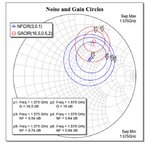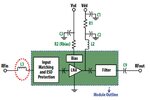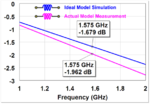criterion456
Member level 2
BGA231L7 of Infineon


ALM-2412 of AVAGO


As shown above, obviously, the series inductor at LNA input is Input Matching to achieve minimum noise figure, thereby improving sensitivity.
Nevertheless, the inductor value is 6.8nH and has 1.8dB insertion loss@ GPS frequency.

That’s to say,

The inductor can increase insertion loss 1.8dB and reduce noise figure simultaneously.
Therefore, there will be 3 possible situations:
1. Noise figure reduces more than 1.8dB : The sensitivity improves.
2. Noise figure just reduces 1.8dB : The sensitivity remains the same.
3. Noise figure reduces less than 1.8dB : The sensitivity aggravates.
But, according to my previous experience, the sensitivity always improves.
So, I’m confused.
Does the series inductor always reduce noise figure more than its insertion loss ?
If not, why does the inductor be still able to improve sensitivity ?
Thanks a lot~!!


ALM-2412 of AVAGO


As shown above, obviously, the series inductor at LNA input is Input Matching to achieve minimum noise figure, thereby improving sensitivity.
Nevertheless, the inductor value is 6.8nH and has 1.8dB insertion loss@ GPS frequency.

That’s to say,

The inductor can increase insertion loss 1.8dB and reduce noise figure simultaneously.
Therefore, there will be 3 possible situations:
1. Noise figure reduces more than 1.8dB : The sensitivity improves.
2. Noise figure just reduces 1.8dB : The sensitivity remains the same.
3. Noise figure reduces less than 1.8dB : The sensitivity aggravates.
But, according to my previous experience, the sensitivity always improves.
So, I’m confused.
Does the series inductor always reduce noise figure more than its insertion loss ?
If not, why does the inductor be still able to improve sensitivity ?
Thanks a lot~!!



